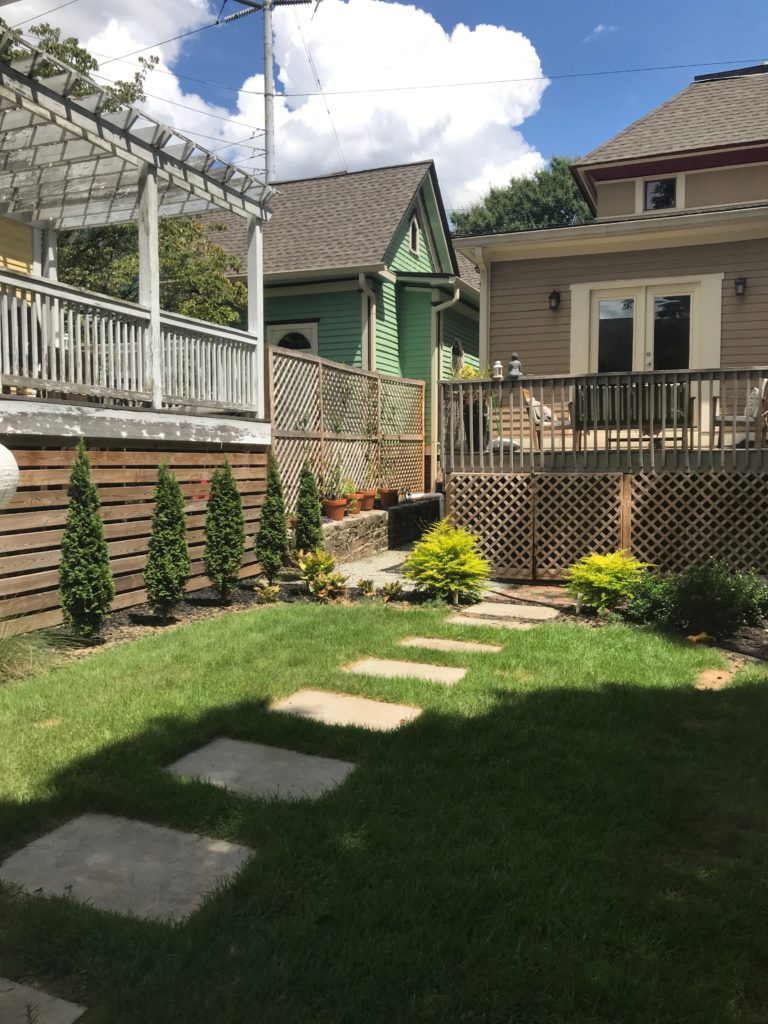Even tiny spaces, if intentionally designed, can grow food, manage water, and have room to gather. Here’s what we did to transition a compact backyard into a productive urban garden.
BEFORE:
This mostly sunny tiny backyard receives lots of water from the house and the neighbors, and was originally planted with unused lawn and lots of ornamental plants. The clients wanted, instead, to grow lots of food and flowers and manage the water so their crawl space would stop flooding.
THE DESIGN:
In the design, we focused on creating useful gathering spaces, including a renovated deck, a fire pit, and outdoor dining, and transitioning the lawn and ornamentals to edible veggies and fruits, herbs, and pollinator support plants, such as rosemary, little bluestem, liatris, muhly grass, milkweed, and strawberries.
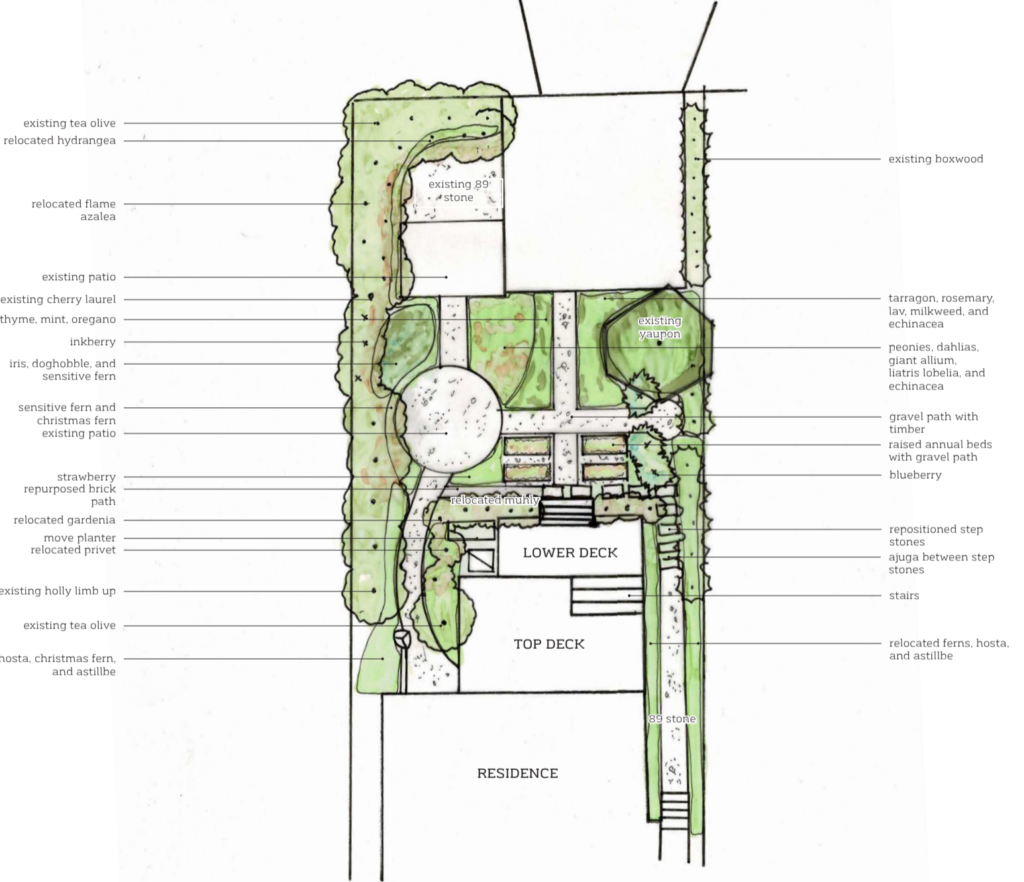
AFTER:
We dug up the lawn and reworked the hardscape, as the parking is in the back and the approach to the house is a main thoroughfare. We captured all of the roof water and routed it to a rain garden before exiting the property. We built low-framed veggie beds to define the paths from the food production. All of the hardscape is pervious to help infiltrate the rain. With a little reorganization, the space went from mostly un-utilized to vibrant and productive!
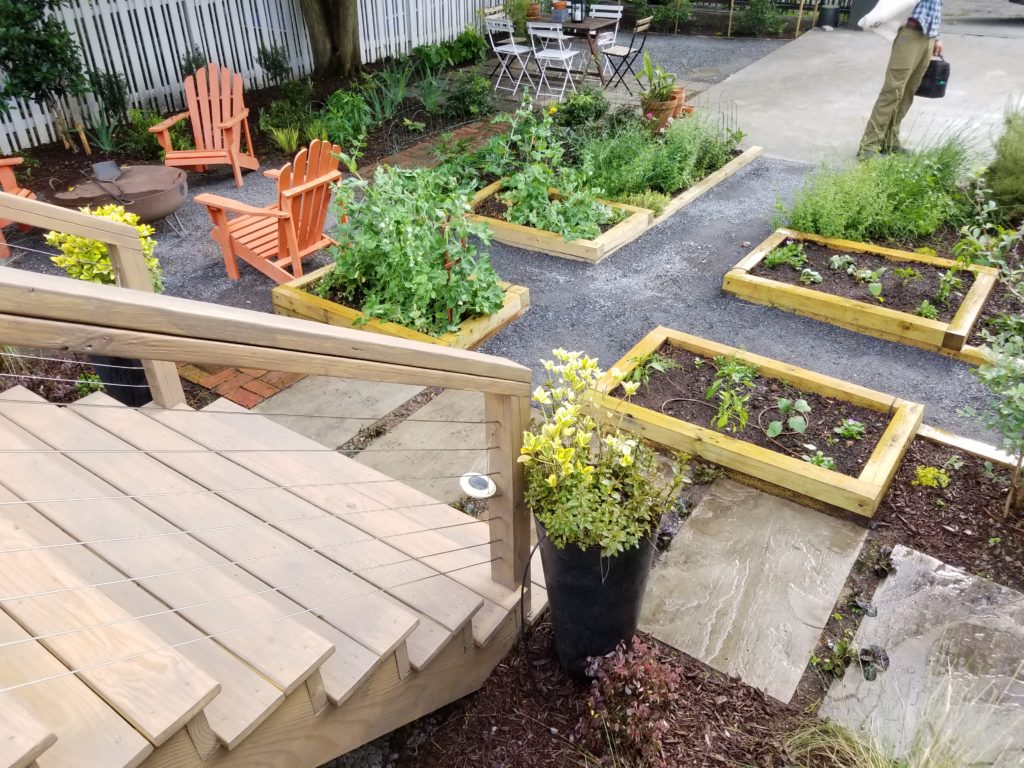
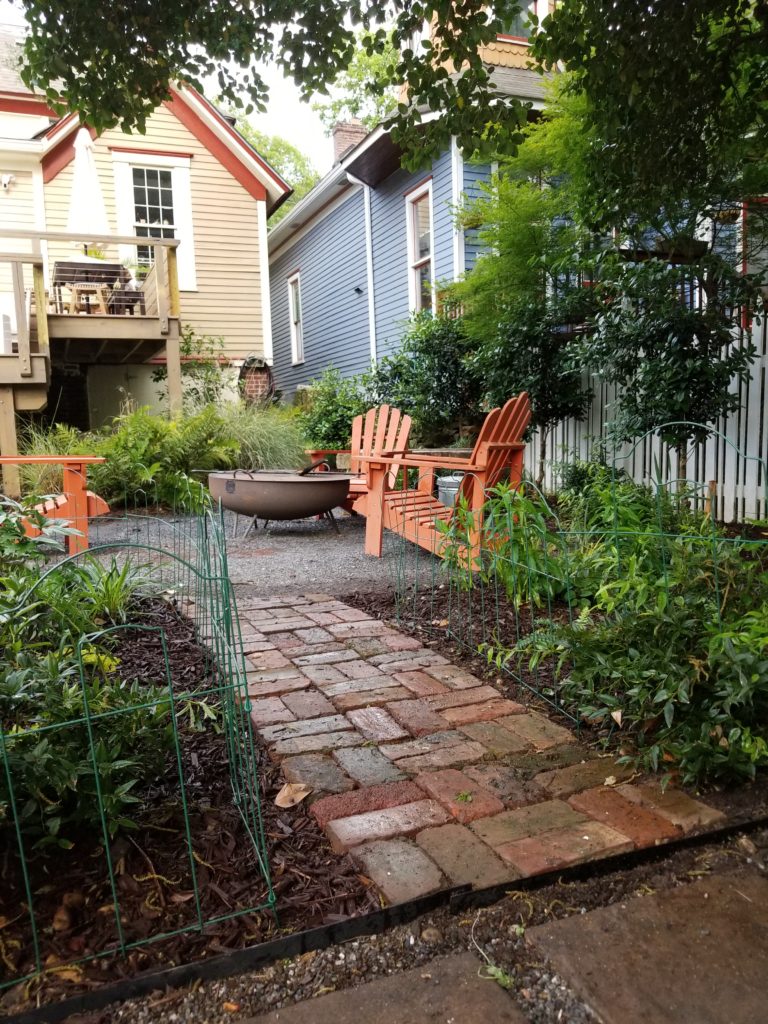
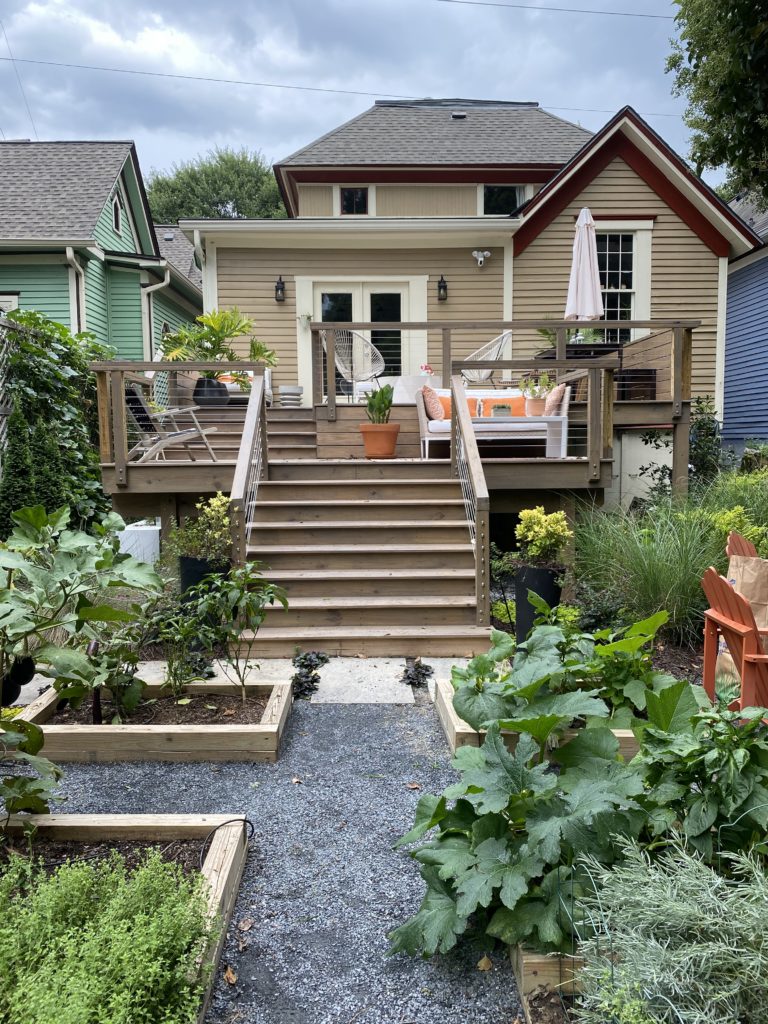
If you want to know more about stewardship practices that build resilience in your yard, I have a FREE masterclass⏤ The 3 Pillars of a Regenerative Landscape⏤coming up soon. You can register here if you’d like to learn simple solutions you can easily implement in your yard to make a positive impact. We will cover techniques for working with water (you only need a shovel!), including how to build soil without the need for fertilizers or costly inputs and how to choose plants that work together to support the ecology of your land (and feed you, too!).
